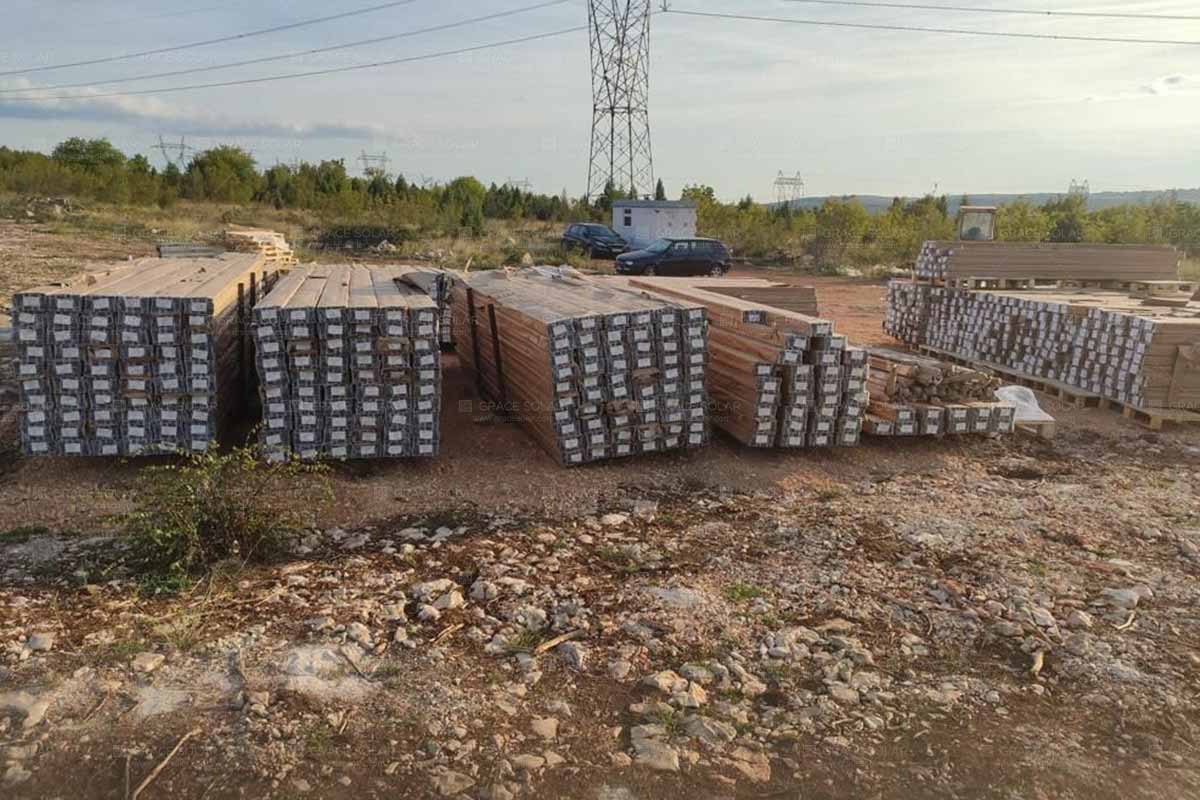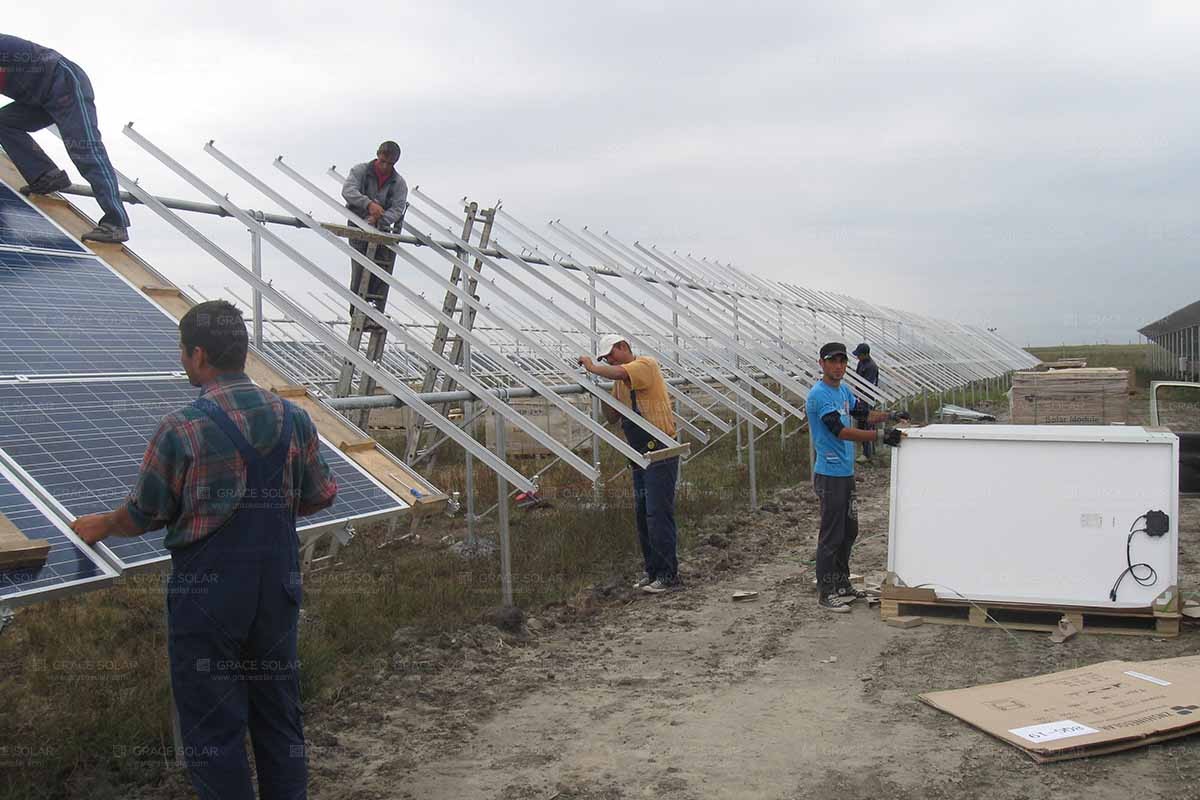solar mount: core auxiliary material of solar industry chain
solar mount system is the "skeleton" that supports solar modules, and its performance directly affects the operation stability, power generation efficiency and investment income of solar power plants, and plays an important role in the construction of solar power plants.

solar mounts are special brackets designed for placing, installing, and fixing solar panels in the solar power generation system. In the cost structure of the entire solar power generation system, the bracket cost accounts for about 16.3% of the investment cost of the power station, and has a significant impact on the life of the solar power generation system. and power generation efficiency.
solar mounts can be divided into fixed brackets and tracking solar mount according to whether they can rotate with the sun.
The fixed bracket has a simple structure, good stability, low initial investment and maintenance costs,
With its excellent stability and low initial investment cost, fixed brackets occupy a large share in the solar mount market and are currently the mainstream type.
Distributed solar power plants are generally located in industrial and residential areas, with limited space and general lighting conditions, and usually use fixed brackets or BIPV products.
In the context of the gradual decline of solar subsidies, solar mounts, especially tracking solar mount, as an important product to reduce costs and increase efficiency, reduce the cost of electricity, and improve the investment efficiency of power plants, their status in the power station investment industry has been improved.
The replacement of fixed brackets by global tracking solar mount has become a trend. It is expected that the global tracking solar mount will account for 25%, 33%, and 36% of solar installed capacity in 2021-2023.
The tracking bracket is mainly composed of three parts: structural system (rotatable bracket), drive system, control system (including communication control box, sensor, cloud platform, electric control box and other components).
According to CPIA data, tracking solar mount account for 12.98% of the total system cost, second only to component costs and construction and installation costs.
The tracking bracket can follow the sunlight to rotate in real time, which can not only improve the power generation gain, but also smooth the output curve.
The combination of the tracking bracket and the double glass can reduce the angle between the module and the direct sunlight, obtain more solar radiation, achieve higher power generation, and effectively improve the power generation efficiency.
According to EnergyTrend data, solar tracking solar mount can generally bring a 15%-20% increase in power generation to solar power plants, and in some low-latitude areas with abundant light resources, it can even bring more than 20% increase in power generation.
Power stations using tracking solar mount need to increase a certain initial investment cost, and need to bear certain device operation risks and post-maintenance costs.
Different from the fixed bracket, the tracking bracket has four core barriers in the actual application process: 1) wind engineering and wind tunnel testing; 2) system structure design and arrangement; 3) algorithm and AI application; 4) bankability and project endorsement.
According to Wood Mackenzie data, global PV tracking mount shipments will reach 44GW in 2020. With the reduction of cost, the solution of stability and the application of double-sided modules, the global shipments of solar tracking solar mount will reach 110 GW in 2025, and the market space will be close to 60 billion yuan.
In the future, the increase in new installed capacity of solars will continue to drive the market demand for solar tracking solar mount to rise.
The United States is the world's largest tracking bracket market. In recent years, many emerging solar markets, especially Asia, Australia and Africa, have seen a rapid increase in the demand for tracking solar mount.
In the past few years, due to the relatively high cost of tracking stents, the application of tracking stents in the Chinese market is small, the global voice of domestic tracking stent brands is relatively small, and the market share occupied by enterprises is relatively low, and the use is mainly concentrated in demonstration and front-runner projects.
According to the forecast of China solar Industry Association, with the advent of the era of solar power generation parity, the domestic market penetration rate of tracking solar mount is expected to reach 30% in 2022, and will increase to more than 50% in the future. The future market space for solar tracking solar mount is broad.
From the perspective of the solar mount industry chain, the upstream is mainly composed of bulk metal materials such as steel and electromechanical components such as rotary reducers. The overall upstream market structure is relatively scattered and the supply is relatively sufficient.
Downstream customers are mainly solar power station developers and EPC contractors, generally large in scale and high in concentration.
solar mounts are considered to be the original forging process in the traditional view, that is, the core is to complete the work of the overall power station solar mounts through the welding and arrangement of steel structures, so the barriers are low.
In the future, the new installed capacity of solars around the world will continue to increase. On this basis, although the installed capacity of large-scale ground power stations has declined slightly, it still accounts for more than 50% of the share. Due to the advantages of tracking stents compared to fixed stents, the penetration rate continues to increase, and the industry is expected to usher in a broad space for development.
As one of the key auxiliary materials of the solar industry chain, the market scale of solar mounts is expected to continue to expand, while domestic enterprises in the integrated production mode have stronger delivery capabilities, more quality control and cost advantages, and are expected to open a domestic replacement cycle.



.jpg)